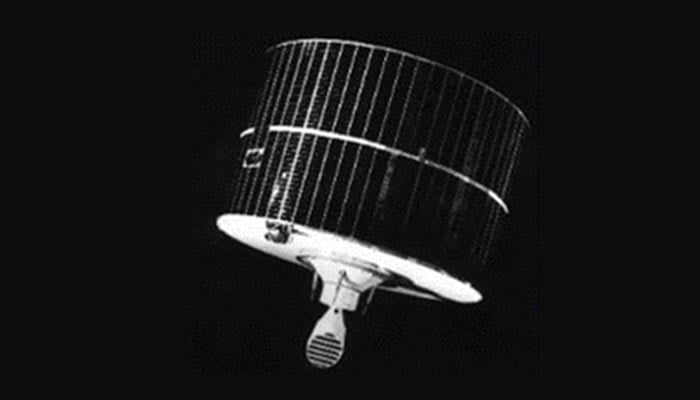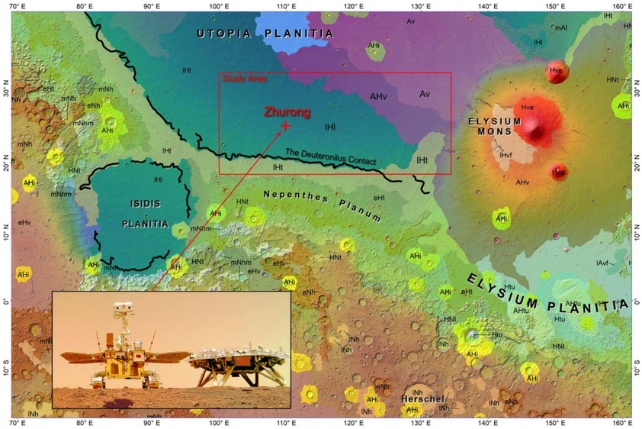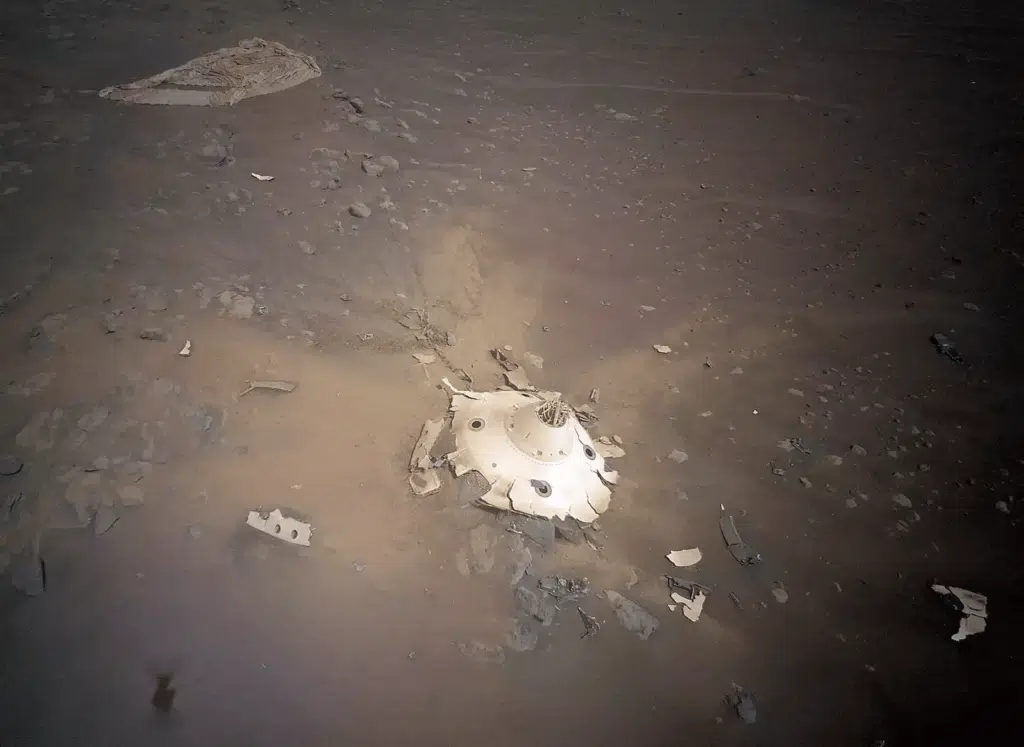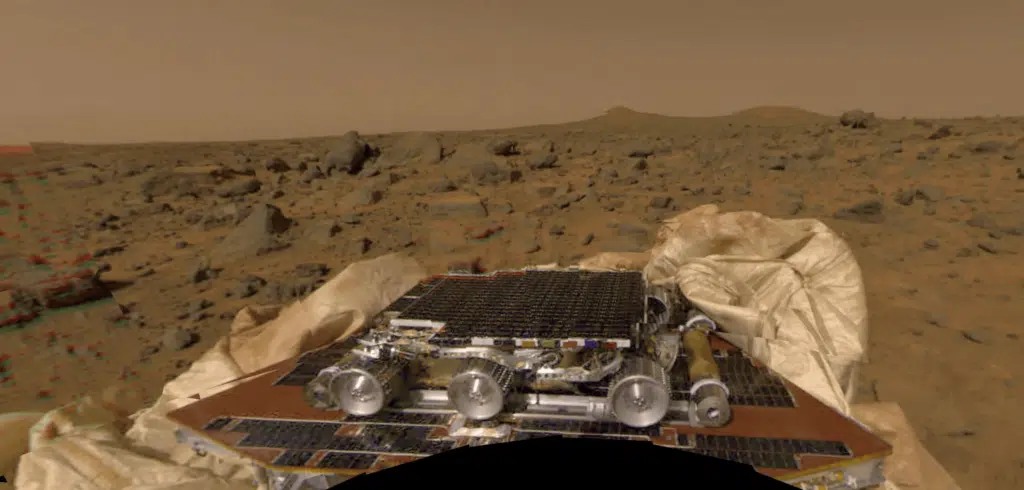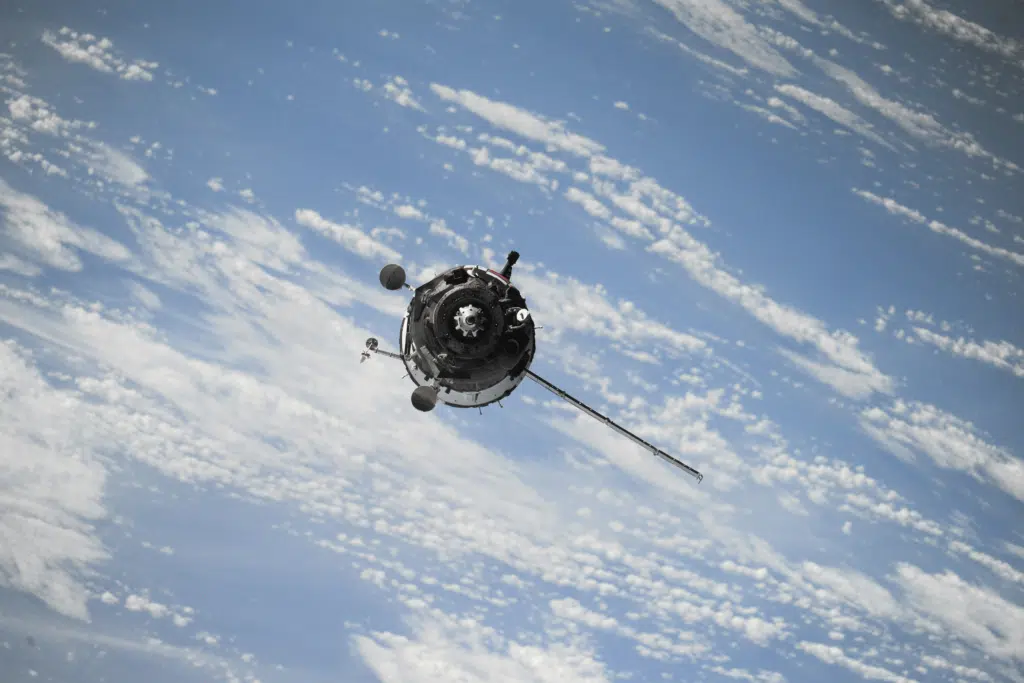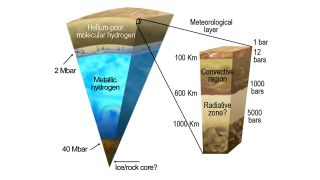Stark warning on emissions as leaders split on climate goals at COP29
By AFP
November 13, 2024
Italian Prime Minister Giorgia Meloni told COP29 that 'We must protect nature, with men at its core'
Laurent THOMET
Global leaders offered competing views on how to tackle climate change at UN-led talks Wednesday as a new report warned the world must reach carbon neutrality much sooner than planned.
Planet-warming carbon dioxide emissions from oil, gas and coal rose to a new record high this year, according to preliminary research from an international network of scientists at the Global Carbon Project.
The report came as leaders gathered in Azerbaijan for COP29 climate talks aimed at reaching a deal on boosting funding to help poorer nations adapt to climate shocks and transition to cleaner energy.
The research found that to keep the Paris agreement’s ambitious goal of limiting warming to 1.5 degrees Celsius in sight, the world would now need to reach net-zero CO2 emissions by the late 2030s — instead of 2050.
The warning also follows concerns about the future of the fight against climate change following the election of Donald Trump.
Trump, who has vowed to again pull the United States out of the Paris agreement, named his head of the Environmental Protection Agency Tuesday with a mandate to slash pollution regulations.
Some leaders in Baku defended fossil fuels during two days of speeches while others from countries plagued by climate disasters warned that they were running out of time.
– ‘Slower’ path –
Italian Prime Minister Giorgia Meloni called for a “realistic global outlook” on Wednesday, saying that world population growth will boost energy consumption demand.
“It is equally a priority that decarbonisation takes into consideration our production and social system’s sustainability,” she said.
“We must protect nature, with man at its core. An approach that is too ideological and not pragmatic on this matter risks taking us off the road to success,” the far-right leader said.
“Currently there is no single alternative to fossil fuel supply.”
Greek Prime Minister Kyriakos Mitsotakis called for a “smart” Green Deal, the European Union’s ambitious climate plan which aims to make the bloc carbon-neutral by 2050.
“We cannot drive ourselves into industrial oblivion,” the conservative leader said.
“We need to ask hard questions about a path that goes very fast, at the expense of our competitiveness, and a path that goes somewhat slower, but allows our industry to adapt and to thrive,” he said.
Their views contrasted with leaders from countries beset by climate catastrophes and rising sea levels.
“Tuvalu sincerely hopes that this COP’s concluding decisions will deliver a clear signal that the world is promptly phasing out fossil fuel,” said the Pacific island’s Prime Minister Feleti Penitala Teo.
“For Tuvalu and similarly placed countries, there is simply no time to waste,” he said.
– Money fight –
As leaders spoke, negotiators released a fresh draft of a deal with a raft of options to raise funding for poorer countries, while leaving unresolved sticking points that have long delayed an agreement.
Most developing countries favour an annual commitment from wealthy countries of at least $1.3 trillion, according to the latest draft of the long-sought climate finance pact.
This figure is more than 10 times the $100 billion annually that a small pool of developed countries — among them the US, the EU and Japan — currently pay.
Some donors are reluctant to promise large new amounts of public money from their budgets at a time when they face economic and political pressure at home.
The prime minister of the hurricane-vulnerable Bahamas, Philip Davis, said small island nations have spent 18 times more on debt repayment than they have received in climate finance.
“The world has found the ability to finance wars, the ability to mobilise against pandemics,” Davis said.
“Yet when it comes to addressing the most profound crisis of our time, the very survival of nations, where is that same ability?”
Nations approve new UN rules on carbon markets at COP29
By AFP
November 11, 2024
Carbon credits are generated by activities that reduce or avoid planet-heating greenhouse gas emissions, like planting trees or replacing polluting coal with clean-energy alternatives - Copyright AFP Tony KARUMBA
Governments at the COP29 talks approved Monday new UN standards for international carbon markets in a key step toward allowing countries to trade credits to meet their climate targets.
On the opening day of the UN climate talks in Azerbaijan, nearly 200 nations agreed a number of crucial ground rules for setting a market in motion after nearly a decade of complex discussions.
Other key aspects of the overall framework still need to be negotiated, experts said, but the decision brings closer a long-sought UN-backed market trading in high-quality credits.
“It’s hugely significant,” Erika Lennon, from the Center for International Environmental Law (CIEL), told AFP in Baku, saying it would “open the door” for a fully-fledged market.
Carbon credits are generated by activities that reduce or avoid planet-heating greenhouse gas emissions, like planting trees, protecting carbon sinks or replacing polluting coal with clean-energy alternatives.
One credit equals a tonne of prevented or removed heat-trapping carbon dioxide.
Since the Paris climate agreement in 2015, the UN has been crafting rules to allow countries and businesses to exchange credits in a transparent and credible market.
The benchmarks adopted in Baku will allow for the development of rules including calculating how many credits a given project can receive.
Once up and running, a carbon market would allow countries — mainly wealthy polluters — to offset emissions by purchasing credits from nations that have cut greenhouse gases above what they promised.
Purchasing countries could then put carbon credits toward achieving the climate goals promised in their national plans.
– ‘Big step closer’ –
“It gets the system a big step closer to actually existing in the real world,” said Gilles Dufrasne from Carbon Market Watch, a think tank.
“But even with this, it doesn’t mean the market actually exists,” he added, saying further safeguards and questions around governance still remain unanswered.
An earlier UN attempt to regulate carbon markets under the Paris accord were rejected in Dubai in 2023 by the European Union and developing nations for being too lax.
Some observers were unhappy that the decision in Baku left unresolved other long-standing and crucial aspects of the broader crediting mechanism, known in UN terms as Article 6.
“It’s not possible to declare victory,” said a European diplomat, speaking on condition of anonymity.
There are hopes that a robust and credible UN carbon market could eventually indirectly raise the standards of the scandal-hit voluntary trade in credits.
Corporations wanting to offset their emissions and make claims of carbon neutrality have been major buyers of these credits, which are bought and exchanged but lack common standards.
But the voluntary market has been rocked by scandals in recent years amid accusations that some credits sold did not reduce emissions as promised, or that projects exploited local communities.
And the idea of offsetting as a whole faces deep scepticism from many.
“No matter how much integrity there is in the sort of the carbon markets, if what you are doing is offsetting ongoing fossil fuels with some sort of credit, you’re not actually reducing anything,” said Lennon.
Lame-duck US climate team vows to be ‘effective’ at COP29
By AFP
November 12, 2024
US officials vow to be 'effective' participants at COP29 despite the election climate-sceptic Donald Trump - Copyright AFP Alexander NEMENOV
Laurent THOMET
They may be out of a job when Donald Trump takes office in two months, but US officials kept a busy schedule at UN climate talks, reminding jittery countries that global action had survived his first term.
President Joe Biden’s lame-duck climate envoy, John Podesta, scurried back and forth to meetings and events across the cavernous halls of the COP29 conference in Baku.
Among the slew of pavilions put up by countries to host panel discussions, it was business as usual at the US site, where it is hosting chats throughout the two-week gathering.
The United States is also in the thick of complex negotiations to reach a deal on dramatically increasing financing to help poorer countries adapt to climate change and transition to cleaner energy.
But the return of climate-sceptic Trump, who has vowed to pull the US out of the Paris agreement again, remained a hot topic of conversation.
“There’s no doubt that the lack of federal action on climate change is a big problem, and it’s going to hobble US climate action,” said Rachel Cleetus, a policy director at the Union of Concerned Scientists.
“But here at COP29 the Biden administration is still a government, and we expect them here to show leadership, take responsibility and push for ambitious outcomes at this COP in the negotiations in the next two weeks,” she said.
– ‘Effective participant’ –
Podesta, who only took the job earlier this year, kicked off his visit Monday by seeking to reassure countries that work to contain climate change would continue in the US, even if Trump puts the issue on the “back burner”.
On Tuesday, he co-headlined a summit on methane alongside his Chinese counterpart and the COP29 president during which he announced that oil and gas companies would be charged a fee for methane emissions in the US.
For his part, Ali Zaidi, Biden’s climate adviser, said Tuesday that he has been pointing out “what we witnessed between 2017 and 2021” — Trump’s first term.
Trump was unable to roll back former president Barack Obama’s solar and wind tax credits, while multilateral development banks continued to ramp up their capacity on climate finance, he said.
He added that developed countries were still able to meet a target of providing $100 billion in annual climate aid to poorer countries in 2022, a year after Trump left office. (That was two years later than promised, however).
“My big picture view on climate finance is (that) we’ve seen not just the US, but other countries zig and zag over the course of… COPS,” Zaidi said.
“There’s been a benefit in setting ambitious targets far out.”
Ramping up climate finance is at the heart of the negotiations in Baku, with some nations pushing for the aid to be increased tenfold to $1 trillion per year.
“I think we will be an effective participant in a conversation that should conclude successfully over the course of the next two weeks,” Zaidi said.
– ‘Don’t hide behind US election’ –
A veteran negotiator from an African country told AFP that it appears that US negotiators might be making modest demands in the hope that the next administration would not object to the outcome of COP29.
Cleetus said other countries should put pressure on the US during the talks.
“Countries should not hide behind the US election outcome not to do the right thing, because everybody knows what’s needed right now to secure our climate goals,” she said.
Germany’s climate negotiator, Jennifer Morgan, said she saw “strong determination” from countries to work together despite the US election’s outcome.
“The mood here is a very determined mood to move forward in implementing and accelerating the energy transformation that we decided last year (at COP28 in Dubai) and in getting an ambitious and fair climate finance outcome,” she told AFP.
By Dr. Tim Sandle
November 11, 2024

COP29 will focus on climate finance for developing countries -
The major climate change conference, taking place in Azerbaijan’s capital Baku, has begun – COP29 (29th meeting of the Conference of the Parties). World leaders from around 200 nations are attending this year’s summit to discuss climate change and how to fight it. At the same time, the World Meteorological Organisation has declared 2024 to be the hottest on record.
Many scientists are seeking to persuade the governments of high income countries to raise over a trillion dollars in finance for the developing world to prepare and mitigate climate crisis.
Azerbaijan is a controversial choice for the 29th United Nations event, due to the country being heavily reliant on oil.
Opening the conference, UN Climate Change Executive Secretary Simon Stiell made a passionate plea for urgent, global cooperation on climate change:
“We mustn’t let 1.5 slip out of reach. Even as temperatures rise, the implementation of our agreements must claw them back. Clean energy and infrastructure investment will reach two trillion dollars in 2024. Almost twice that of fossil fuels. The shift to clean-energy and climate-resilience will not be stopped. Our job is to accelerate this and make sure its huge benefits are shared by all countries and all people.”
How successful will COP29 be? For many it is simply a bridging conference until COP30, when greater action against climate change is expected.
As COP29 kicks off, Digital Journal has heard from environmental and economic experts from the University of Oxford.
Sam Fankhauser, Professor of Climate Economics, Smith School of Enterprise and the Environment explains that while COP29 is a smaller event that some previous climate conferences it remains essential that advancements are made: “It is important that we make progress on issues such as a new climate finance goal, the rules on global carbon trading and the next round of national commitments to keep global warming well below 2oC. I hope our research can give parties the confidence to sign up to meaningful new commitments and maintain the integrity of the Paris process.”
As to what these actions could be, Injy Johnstone, Research Associate in Net Zero Aligned Offsetting, Smith School of Enterprise and the Environment, outlines areas that need to be addressed: “During COP29, my focus will be on improving the net zero alignment of carbon markets. This includes active engagement in the Article 6 negotiations, major elements of which are set to be finalised this COP29, as well as mapping gaps and opportunities to scale durable carbon removal to address the growing ‘CDR gap’, including by implementing the Oxford Offsetting Principles.”
As to what could be delivered, Johnstone states: ” My hope at COP29 is that negotiators will see environmental integrity as central to rather than a barrier to establishing the international carbon market under Article 6 and that, ultimately, it sets a new global baseline from which we can go further and faster on climate mitigation.”
Professor Thomas Hale, Professor of Global Public Policy, Blavatnik School of Government expresses the view that improved political commitment and governmental action is needed: “I hope COP29 will send countries a clear signal that they need to upgrade their pledges under the Paris Agreement, due next year, and match top-level targets with concrete rules and regulations that drive implementation. A trust-building deal on the new finance goal can give countries confidence to reach their maximum ambition.”
Addressing issues with economics, including climate funding remains important. Here, Dr Brian O’Callaghan, Lead Researcher, Smith School of Enterprise and the Environment says: “I’m advocating for a climate finance solution that makes economic sense—one that accounts for needs as well as technical factors like financial discounting.”
In particular, O’Callaghan urges: “Developing countries need a fighting chance to tackle climate change alongside development; their success is the world’s success. In most cases, this requires a target well over $1 trillion per year, clawback mechanisms for missed payments, and a public finance backstop on private finance commitments.”
Further with the economic aspects, Dr Nicola Ranger, Director, Global Finance and Economy Group & Resilient Planet Finance Lab, indicates: “COP29 has been billed as the finance COP. We need to see agreement on a new, ambitious climate finance goal for developing economies to support them to build resilience to climate change and transition toward low-carbon and nature-positive growth paths. The world cannot achieve its climate goals if we do not bring all countries with us.”
Debt remains an obstacle to joined-up economic planning. Ranger hopes: “As part of this, we need to see meaningful steps toward addressing the debt challenge – developing countries face a triple whammy of rising climate impacts, debt, and transition risks which amplify and reinforce each other. If we don’t address this directly and support countries to build both fiscal and climate resilience, the spiralling debt and setbacks to development in the poorest countries will have massive implications for all.”
Previous financial pledges on climate change yet to materialise, PM Shehbaz tells COP29 summit

Prime Minister Shehbaz Sharif highlighted on Wednesday that financial pledges made at the previous two United Nations’ annual climate summits — COP27 and COP28 — were yet to materialise.
He made the remarks during the 29th United Nations Climate Change Conference, also known as COP29, that is being held in Azerbaijan’s capital of Baku. The premier presented Pakistan’s case on the second and final day of the World Leaders Climate Action Summit.
Pakistan is ranked among the top 10 most climate-vulnerable countries, according to the Global Climate Risk Index. It has faced increasingly frequent and severe weather events, such as unprecedented floods, intense monsoon rains, devastating heat waves, rapid glacial melting and glacial lake outburst floods.
Addressing the summit, PM Shehbaz asserted that COP29 should “make this understanding loud and clear that we will have to fulfil those financial pledges” committed at COP27 and COP28.
“And yet, I think, those huge financial commitments have to be materialised.”
The prime minister said the event was aimed at understanding the “calamities which, unfortunately, some of the countries have already faced and some will if we do not act”.
At COP27 in 2022, which was also attended by PM Shehbaz, countries had adopted a hard-fought final agreement to set up a “loss and damage fund” to help poor countries battered by climate disasters.
At COP28 last year, then-caretaker premier Anwaarul Haq Kakar had called for immediately executing the $100 billion in commitments for climate finance.
According to the UN, around $700 million have been pledged so far for the loss and damage fund, with France, Italy, Germany and the UAE being the biggest contributors.
At COP29 today, PM Shehbaz also spoke about the devastating monsoon floods of 2022, highlighting they had resulted in 1,700 deaths, massive displacement, destruction of houses and crops, and $30m loss to the country’s economy.
He called on the international community “to take measures which are so important at this point in time to have a conducive environment” to combat climate change.
The prime minister stressed that Pakistan was one of the countries that “hardly contribute” to global emissions, yet it was vulnerable to climate change and listed as one of the “10 countries which can, God forbid, face this kind of devastation again”.
“My memories are still fresh,” he said, recalling a meeting with flood affectees in Balochistan, including a boy named Ikramullah who had “lost everything”.
“His entire village was erased from the face of the earth, his home was completely demolished, and his school was also submerged. And we had arranged his education [in] another part of Pakistan,” he said.
PM Shehbaz stated he would not want “other countries to face the plight Pakistan faced back in 2022”.
Describing Pakistan as a “resilient, hard-working and responsible nation”, the premier affirmed his country was “fully committed to being part of the global climate solutions”.
Concluding his speech, the prime minister expressed the hope that under Azerbaijan’s leadership, COP29 can transform into a “finance COP by restoring confidence in the pledging process and scaling up climate finance”.
“I strongly feel that climate finance must be grant-based and not add to the debt burden of vulnerable developing countries,” he said, reiterating his remarks from yesterday on the sidelines of the summit.
“Two years ago, I warned, and I warned at the top of my voice, that the future would never forgive our inaction. Today, I echo the same,” PM Shehbaz asserted.
‘We shouldn’t brave impact of emissions by others’
Referring to the 2015 Paris Agreement, PM Shehbaz said: “Ten years ago in Paris, we had failed to stop the rise in emissions and catastrophic global warming, and those pledges in Paris 10 years ago, which were made have yet to see the light of the day.”
“As the minus-one emitters, we should not brave the impact of emissions realised by others without even the tools to finance resilience,” he emphasised.
“Without climate justice, there can be no real resilience,” the prime minister asserted.
The premier further said Pakistan would “go through a renewable energy revolution”, noting that the country last year presented a “comprehensive National Adaptation Plan”.
He continued: “This year, we have developed our National Carbon Market Framework. But we cannot do it alone. Pakistan needs international support to deliver on its climate ambitions.”
“My government has taken concrete actions to deliver on its commitment of producing 60 per cent of all energy from green sources and shifting 30pc of our vehicles to EVs (electric vehicles) by the end of this decade,” he told the summit.
PM Shehbaz stated that developing countries would need an estimated $6.2 trillion by 2030 to implement less than half of their current Nationally Determined Contributions (NDCs).
“The same goes for adaption and loss and damage,” he added, recalling the efforts at COP27 led by then-climate change minister Sherry Rehman.
‘Debt cannot be new normal’
Speaking at a Pakistan-organised conference at COP29 yesterday, PM Shehbaz had said debt cannot become the “acceptable new normal” in climate financing.
He had explained that financing in the form of loans pushes developing nations towards “mounting debt traps”, which he referred to as “death traps”.
Speaking at Glaciers 2025: Actions for Glaciers, the prime minister had also linked humanity’s survival with the health of glaciers, saying Pakistan was ready to work with the world on the matter.

PM Shehbaz also met with various world leaders on the sidelines of the summit, including UAE President Sheikh Mohammed bin Zayed Al Nahyan, UK PM Sir Keir Starmer and Turkish President Recep Tayyip Erdogan, as well as those from South and Central Asia.
Dozens of world leaders convened in Azerbaijan for COP29 but many big names skipped the UN climate talks where the impact of Donald Trump’s election victory was keenly felt.
US President Joe Biden, China’s President Xi Jinping, India’s PM Narendra Modi and France’s President Emmanuel Macron were among the G20 leaders missing the event.
Pakistan witnessed devastating floods during the 2022 monsoon season, induced by climate change, resulting in the loss of at least 1,700 lives.
With 33 million people affected and swathes of agricultural land washed away, the damage incurred losses worth $30 billion, according to government estimates.
In June 2024, a heat wave brought record-high temperatures, severely impacting public health and agriculture.
More to follow
China plays key role in global climate action
The 29th Conference of the Parties to the UN Framework Convention on Climate Change (COP29) is scheduled to take place in Baku, Azerbaijan, from Nov 11 to 22.
During a recent interview with China Daily, Michael Toman, a senior fellow at Resources for the Future and former lead economist on climate change at the World Bank, highlighted that China plays a key role in global climate action.
Toman emphasized that China's emission reduction policies are robust, well-crafted, and are geared towards achieving carbon peak before 2030 and carbon neutrality before 2060. These actions not only provide critical guidance for global climate efforts but also set a strong example for other countries to follow.
Climate summit
Huma Yusuf

OVER 140,000 people displaced by flooding in Sindh this August are living in unbearable conditions. They sleep in tents, scrape by on one meal a day, and die from waterborne diseases. They fear more hunger as, according to Amnesty International, 500,000 acres of the province’s farmland lies flooded. Most are steeped in crushing debt, having taken fertiliser on credit to sow fields that remain waterlogged. This is the long tail of climate catastrophe.
The fate of our climate-affected compatriots lies in the hands of world leaders gathering today in Baku for COP29, the UN climate change conference. Unfortunately, the mood is despondent. Donald Trump’s re-election as US president has given this COP the air of a non-starter. Trump’s climate denial threatens to rationalise inaction by countless others.
The host’s priorities also raise questions about the sincerity of the COP process. Azerbaijan is hooked on fossil fuels, with oil comprising 90 per cent of its exports. Videos leaked this week show the chief executive of the country’s COP29 team seeking to strike more fossil fuel deals on the summit’s sidelines.
This poor momentum will be further derailed by low turnout by key stakeholders. Leaders from France, Germany, the US, China, India and Brazil aren’t bothering to show up, nor is the prime minister of Papua New Guinea, one of the most climate-vulnerable island nations, describing the summit as a “waste of time”.
What we’ll get in Baku is a reality check.
Thankfully, Pakistan is attending. What we’ll get in Baku is a reality check.
Pakistan last year launched an ambitious National Adaptation Plan but its main climate plan still takes the form of a demand for climate finance. This is not an irrational position given that by World Bank estimates we need investments totalling $348 billion over the next seven years to tackle climate change. COP29 will clarify that we need more than a begging bowl to address this need.
Baku is being termed the ‘Finance COP’ because the key agenda item is determining a ‘new collective quantified goal’ — a new global funding plan for climate action. The ask is material — the UN Standing Committee on Finance estimates $9 trillion are needed for mitigation and adaptation over the next five years.
Agreeing on a climate finance target is one challenge. Then the world must jointly decide who pays, when, how much, and how. Negotiations will be fraught and possibly unproductive, but there are some certainties that Pakistan should plan for. The era of handouts is over. Developed countries will not hand over climate finance without a fight, especially not since over 40pc of all greenhouse gas (GHG) emissions have been produced in the past 30 years, and two-thirds of these by developing countries. Developed economies will not contribute more unless developing yet high-emitting countries such as China, Russia, Brazil and India chip in too.
Consequently, climate finance may appear in various guises. It’s no longer just about loss and damage grants or multilateral development bank projects. China, for example, resists official climate commitments under COP agreements, but going by a Centre for Global Development (CGD) analysis, is already a net provider of climate support totalling $34bn between 2013 and 2021, primarily through lending by its state banks.
Diversified climate financing will require recipient countries to beware of climate debt. Most funding will take the form of ‘global investment flows for climate action’ rather than dole-outs. Expect more private sector involvement (in the form of loans), mobilisation promises, and diversions of existing development finance and aid. Learning lessons from CPEC, Pakistan should avoid climate packages that increase the debt burden.
The direction of travel is towards self-sufficiency.
Countries need to revamp their Nationally Determined Contributions (proposing GHG cuts and adaption plans) by February ahead of COP30 in Brazil. Agreements at Baku will also increasingly take the form of co-financing, for example, the ‘buy one get one free’ model proposed by Jonathan Beynon for the CGD which envisages developed countries matching every dollar committed to climate mitigation or adaptation by developing countries.
One thing is certain, the climate finance agreed in Baku this week will go to countries that will put it to good use. So far, that’s not us. As a recent Institute of Strategic Studies brief points out, our political instability, weak governance, lack of bankable projects, and paucity of data to evidence climate needs are all deterrents to climate funding. So are sociopolitical dynamics such as the disinterest in community engagement and tendency to suppress grassroots initiatives, which are seen as the bedrock of climate action. It’ll take more than asking to address our climate challenge.
The writer is a political and integrity risk analyst.
X: @humayusuf
Published in Dawn, November 11th, 2024
As world leaders gather for COP29, the Ismail family is among the millions whose plight serves as a stark reminder of the human cost of climate change.
In the remote highlands of northern Pakistan, the Ismail family once lived in harmony with the towering glaciers that crowned their village. They had deep ties to the land —an enduring connection forged through generations of farming, herding, and living in the shadows of the majestic mountains.
In 2022, however, a catastrophic glacier outburst flood (GLOF) ravaged their home, and with it, their way of life. The flood swept through their village, leaving them with nothing but the painful memories of a once-thriving existence.
Ismail, the sole breadwinner of the family, recalls the fateful day as if it were yesterday. “I was in the fields when the earth began to shake. By the time I got back to the house, the water was already at our doorstep. My wife and children were trapped inside. I had no choice but to grab them and run,” he said, his voice breaking with the weight of the loss. The family barely escaped with their lives, but their home, along with their crops, livestock, and belongings, were swept away by the torrent of water and debris.
Ismail’s family consists of seven members: himself, his wife Zahra, their three children — Sana, Bilal, and Rashid — and his elderly parents, Zulfiqar and Shahida. Before the flood, their lives revolved around farming and raising livestock.
“We lost more than just our home; we lost a part of ourselves,” said Zahra, looking out across the barren landscape where their once-flourishing farm stood. “My children don’t play the way they used to. They look at the mountains with fear now, not with wonder.”
Ismail’s elderly parents, Zulfiqar and Shahida, are still in shock. “We never thought something like this could happen to us,” Zulfiqar says, his frail voice trembling. “We’ve lived here all our lives. These glaciers were our protection, our lifeblood. Now, they have turned against us.”
Climate refugees
The May 2022 flood displaced over 1,000 families across Hunza and Nagar districts in Gilgit-Baltistan. In Hunza alone, around 500 families were forced to leave their homes, particularly in Hassanabad and nearby villages, as floodwaters swept away homes, infrastructure, and agricultural land, leaving hundreds stranded and in urgent need of assistance.
In Hassanabad, the idea of leaving their ancestral land fills many residents with disbelief. These families have lived on the lush orchard fields, nestled among towering mountains, for over 400 years, cultivating crops and grazing livestock in the high plains. For many, the village is not just home — it’s where their ancestors are buried, and the thought of relocating feels unimaginable. With limited resources and deep emotional ties to the land, most say they simply cannot afford to leave the place that has been their life for generations.
The Ismail family, like many others in the region, has become climate refugees — forced to flee their ancestral land as rising temperatures and melting glaciers increasingly threaten their way of life. With no permanent shelter, they have sought refuge in nearby towns and villages, living in temporary shelters and struggling to find work and rebuild their shattered lives. But even in displacement, they face the ongoing fear of future climate events, as the threat of floods, landslides, and extreme weather events continues to loom large.
Hope melting fast
Pakistan is one of the world’s most vulnerable countries to Glofs, with an estimated 800,000 people living within 15 km (9.3 miles) of a glacier. Many residents in the Karakoram Range have built their homes on fertile land along rivers fed by glaciers, unaware of the growing risks posed by the melting ice. These glaciers, once stable, are rapidly retreating due to rising temperatures, increasing the likelihood of catastrophic floods that can sweep away entire communities and their livelihoods.
Amna Batool, a schoolgirl from Hassanabad, vividly recalls the harrowing day in 2022 when part of her town, along with a crucial highway bridge, was swept away by the torrents of meltwater cascading down the Hunza River, a tributary of the Indus.
“The flood didn’t just destroy my home and belongings; it took away all my childhood memories,” she said, her eyes fixed on the pile of rubble where her house once stood. The flooding was triggered by unusually high temperatures that caused a lake to form behind the Shisper Glacier. As the glacier’s meltwater accumulated, the lake grew larger and more unstable. Eventually, the pressure became too great, and the lake breached, unleashing a devastating wave of water and debris down into the steep-sided valley below.
For Batool, the destruction was deeply personal. That fateful day, she was at home with her parents and younger brother when the floodwaters arrived. “We had just finished breakfast when we heard a loud rumbling sound, like a thunderstorm, but it was much closer,” she recalled. “Before we could even understand what was happening, the water came rushing in, tearing through everything in its path.”
Batool’s father, Amjad Ali, who worked as a carpenter, tried desperately to secure the family’s belongings, but the force of the water was too powerful. Her mother, frantic with worry, grabbed her younger brother and led them to higher ground. “We ran as fast as we could, but the water was already swallowing our house,” she said.
The flood took everything. “Not only did we lose our home, but our memories, too. The walls that held my childhood, my father’s tools, my mother’s kitchen — everything was gone,” she said, her eyes lingering on the debris that was once their life. The family, now displaced and struggling, holds on to the hope that one day they can rebuild their lives.
All eyes on COP
According to the International Centre for Integrated Mountain Development (ICIMOD), glaciers in South Asia are on track to lose up to 75pc of their ice by the century’s end due to global warming. As a result of this melting, Pakistan experienced 14 glacial lake outburst floods (GLOFs) between 2018 and 2021, but that number surged to 75 in 2022, according to data gathered by the UNDP.
Dr Miriam Jackson, senior Cryosphere Specialist at ICIMOD, has discussed at length the alarming shift in the Karakoram region, where glaciers that were once stable or growing are now melting at an accelerated rate. A 2023 ICIMOD report revealed that glacier melt has increased by 65pc over the past decade (2010-2019) compared to the previous one. This is particularly concerning for agriculture, which relies on glacier meltwater, as shrinking glaciers will eventually lead to reduced runoff.
Dr Jackson emphasised that reducing greenhouse gas emissions is crucial to slowing glacier melt, urging countries, including Pakistan, to cut emissions and prioritise public transport. She also called for more research on the cryosphere, as the current knowledge of glaciers and snow is limited. She stressed that COP must focus on urgent climate action to meet the Paris Agreement’s target of limiting global warming to 1.5°C, warning that millions of people, especially in downstream regions, will be affected by changes in water resources, hydropower, and climate-induced migration.
As world leaders gather for the 29th Conference of the Parties on Climate Change (COP29) — and many others skip it altogether — the Ismail family is among the millions whose plight serves as a stark reminder of the human cost of climate change. Their story is one of resilience but also one of profound loss — loss not just of material possessions, but of a way of life that has been passed down through generations.
The Conference of the Parties (COP) to the UN Framework Convention on Climate Change (UNFCCC) is a key international summit where countries discuss and negotiate actions to combat climate change, focusing on goals such as limiting global warming to 1.5°C, reducing emissions, and funding climate adaptation. COP29 is crucial for strengthening global climate commitments, particularly for vulnerable countries like Pakistan, which face severe climate impacts such as floods, melting glaciers, droughts and food insecurity.
Since the Paris Agreement (COP21) in 2015, global climate pledges have aimed to limit warming to 1.5°C and provide $100 billion annually for climate finance. However, progress has been slow.
Despite pledges at COP26 (held in 2021) to phase out coal and reduce methane emissions, many countries are still not meeting their targets. A year on, COP27 (2022) established a loss and damage fund for vulnerable nations, but funding gaps remain.
At COP28 (2023), the focus was on emissions reductions and climate justice, but the lack of binding commitments and slow implementation continues to hinder progress. Overall, while awareness and some actions have increased, global emissions are still rising, and the world remains off track to meet the 1.5°C target.
This year, Pakistan is presenting its case to the international community at COP29 being held in Baku, Azerbaijan, from November 11-22. This is a critical opportunity to amplify its voice and underscore that the climate crisis is not a distant threat, but a present-day reality jeopardising the lives and livelihoods of millions. The Ismail family’s suffering, like that of many others displaced by climate disasters, is not just a matter of physical loss but a profound socio-economic upheaval.
Expectations from 2029
Pakistan has high expectations for COP29, with Prime Minister Shehbaz Sharif attending the conference today (Nov 12). The country’s delegation includes key representatives from the Ministry of Climate Change and the National Disaster Management Authority.
Romina Khurshid Alam, the Prime Minister’s Coordinator on Climate Change and Environmental Coordination (MoCC&EC), stressed the crucial role of COP29 as a platform for Pakistan to showcase its climate actions, challenges, and potential solutions. She stressed the importance of global collaboration to achieve climate diplomacy goals, promote gender equality, and advance smart agriculture initiatives through greater private sector involvement.
Alam also highlighted the urgent need to address climate change in Pakistan, one of the world’s most vulnerable nations. Despite contributing less than 1pc of global carbon emissions, she pointed out, Pakistan is bearing the brunt of severe climate disasters — such as floods and droughts—that have devastated infrastructure and livelihoods.
According to Alam, Pakistan, alongside other vulnerable nations, will strongly urge wealthy, high-emission countries to fulfill their climate finance commitments. This funding is crucial to help developing countries cope with the worsening impacts of climate change and support their transition to a low-carbon future through adaptation and mitigation strategies. More importantly, it will decide whether Ismail’s family — and millions like them — get the assistance they so desperately need to restart their lives.
Thus, finance has taken centre stage at COP29, with the Baku summit already being dubbed the “Finance COP.” This focus is largely due to the spotlight on the New Collective Quantified Goal on Climate Finance (NCQG).
An evolution of the 2015 Paris Agreement, the NCQG is designed to replace the previous target of USD100 billion in annual climate finance from developed to developing countries. This target, established in 2009, was meant to be met by 2020. However, most analyses indicate that the actual funding provided has fallen short, despite contrary claims.
For the Ismail family — and millions of others like them — COP29 isn’t just about seeking aid; they are calling for comprehensive policies and long-term solutions that address the root causes of forced migration and provide displaced families like theirs with the tools they need to rebuild their lives and secure a sustainable future. The socio-economic challenges they face are emblematic of the broader crises affecting millions of climate refugees around the world, making urgent action at the global stage more critical than ever.
Header illustration created with generative AI
Nearly 200 countries are supposed to publish updated climate plans by early February, but so far only three have done so.
Nations have begun setting carbon-cutting targets for the decade ahead, and how ambitious these pledges are could make or break global efforts to avoid dangerous levels of climate change.
Nearly 200 countries are supposed to publish updated climate plans by early February, but so far only three have done so.
On Wednesday, the UK became the latest, announcing during the COP29 climate summit in Azerbaijan that it would raise its target to cut greenhouse gas emissions.
All eyes will be on other big polluters like China, India, and the United States, though future US climate action is unclear following Donald Trump’s election.
Why do they matter?
The world has agreed to try and limit global warming to 1.5 degrees Celsius above pre-industrial levels, but is nowhere near on track.
Above this threshold, scientists say humanity risks disastrous consequences from volatile weather to major ecological “tipping points” at land and sea.
Last month, the United Nations warned that even if all existing plans are implemented in full, temperatures would rise 2.6°C by the century’s end, a catastrophic outcome.
The UN says the next round of climate plans must show a “quantum leap” in ambition to avert the worst.
The G20 — which accounts for 77 per cent of total greenhouse gas emissions — is under particular pressure to step up.
Early movers
Just before COP29 opened in Azerbaijan, the United Arab Emirates announced a 47pc reduction in emissions by 2035 compared with 2019 in its updated climate plan.
Observers said the roadmap failed to account for exported emissions —including those from its sales of crude oil abroad.
Next year’s UN climate host, Brazil, has partly unveiled its plan, increasing its emissions reduction target from a 59pc cut by 2035, from 2005 levels, to a 67pc reduction.
It is expected to unveil a more complete plan during COP29.
Plans from other major emitters, like the European Union and China, are not expected until next year.
And the current US government could soon outline Washington’s new pledge, despite questions over Trump following through once in office.
David Waskow, of the World Resources Institute, said it would help guide American cities, states and businesses wishing to continue climate action under Trump.
“It also sends an important signal internationally, a set of benchmarks for what the US ought to do,” he added.
What do countries need to do?
By signing the Paris accord, nearly 200 nations agreed to halt rising temperatures “well below 2°C” and strive for the safer goal of 1.5°C.
But it did not prescribe how to get there.
The deal left it up to countries to voluntarily chart their own plans and targets, known as Nationally Determined Contributions (NDCs).
These include emission reduction targets and measures to achieve them, such as rolling out renewable energy, electrifying transport, and ending deforestation.
There is no set template for countries to follow but richer countries —historically the largest emitters — have a responsibility to pledge the deepest emission cuts.
The plans must be reviewed every five years, with each update supposed to be more ambitious than the last. This time around countries are expected to improve their 2030 targets and outline economy-wide action they will take to 2035.
What’s the aim?
An agreement at last year’s COP28 climate summit “encouraged” countries to come forward with plans aligned with halting warming to 1.5°C.
To have a hope of meeting that goal, emissions must be slashed 42pc by 2030 and 57pc by 2035, the UN’s Environment Programme said last month.
Currently, however, emissions are continuing to rise.
Keeping 1.5°C on track would require a collective effort “only ever seen following a global conflict”, it added.
Without pulling together “on a scale and pace never seen before… the 1.5°C goal will soon be dead,” said UNEP executive director Inger Andersen.
The big moment for assessing progress towards the 1.5°C goal comes at a crunch COP30 climate summit in Brazil next year.
What about fossil fuels?
Scientists and the International Energy Agency have said that developing new fossil fuel projects is incompatible with halting warming to 1.5°C.
But many fossil fuel-producing countries argue that new oil and gas projects will be needed as the world transitions to net zero emissions.
Countries are under pressure to outline in their updated plans how they intend to reduce their reliance on fossil fuels, something all nations agreed on at last year’s COP.
Header image: This picture taken on November 12 shows a wind turbine at the lignite-fired power station operated by German energy giant RWE near Neurath, western Germany.
UNFCCC COP29 side event in Baku to highlight the role of Open Science and science-policy communication in biodiversity and climate change
Pensoft Publishers
image:
Pensoft Publishers is set to host an open side event at the UNFCCC’s COP29 on 21 November 2024
view moreCredit: CO-OP4CBD project
Pensoft Publishers is set to host an open side event at the UNFCCC’s COP29 in Baku, Azerbaijan. This event will showcase how Open Science and Science Communication shape the Science-Policy Interface (SPI) that can effectively support the implementation of knowledge-based policies and tackle critical biodiversity challenges related to climate change.
The 29th Conference of Parties (COP29) of the UN Framework Convention on Climate Change (UNFCCC), which is to be held from 11 to 22 November 2024, will take forward some of the discussions started at the 16th meeting of the Conference of the Parties to the Convention on Biological Diversity (COP16). The two multilateral agreements are set to align their efforts towards the creation of a coordinated climate and biodiversity action to address global priorities of the highest importance.
On the 21st of November, at the national pavilion of the Republic of Bulgaria at COP29 (Baku, Azerbaijan), academic publisher and science technology provider Pensoft Publishers will host a side event to shed light on how open-access research and science communication in the field of biodiversity enables the SPI to effectively support the implementation of the Paris Agreement and the Kunming-Montreal Biodiversity Framework (KM-GBF).
The topic of the event is highly relevant to the dialogue between climate and biodiversity research and political decision-making. Effective science-policy interface is pivotal for informing evidence-based policies, enabling effective strategies and actions under the biodiversity and climate frameworks.
Side Event: Supporting Climate and Biodiversity Policy Through Open Science and Science Communication
- Date: 21 November 2024
- Time: 13:30 - 14:30 (GMT+4)
- Location: Country pavilion of the Republic of Bulgaria, COP29, Baku, Azerbaijan
This event will demonstrate the importance of open science for achieving efficient evidence-based political decision making, as well as showcase prominent examples of EU-funded projects that shape the SPIs integrating scientific research into policy frameworks to ensure the successful implementation of the KM-GBF.
The event is expected to attract delegates and attendees of the COP29 summit, including policymakers, researchers, and civil society representatives, as it offers a platform for a highly impactful and engaging dialogue.
Find out more information about the upcoming events, the organisers, and research results related to biodiversity policy at the dedicated COP29 webpage.
Interviews with event organisers and panellists can be arranged upon request.
For more information or to schedule interviews, please contact:
Alexandra Korcheva
a.korcheva@pensoft.net
Pensoft Publishers
***
About Pensoft Publishers:
Pensoft is an independent academic publishing company, well known worldwide for its novel cutting-edge publishing tools, workflows and methods for text and data publishing of journals, books and conference materials; as well as its open-access journal portfolio of over 50 peer-reviewed scientific titles, most of them dedicated to the domains of biodiversity and ecology. Through its Research and Technical Development department, the company is involved in various research and technology projects funded by EU programmes such as Horizon 2020 and Horizon Europe.


